A Tale Of Two Scions: Scion IA Vs. Scion IM
I call Scions “the acronyms from hell” because even I have trouble keeping up with all of them.
iQ, iA, iM, tC, xB, xD. Did I forget one? The xA and…wait! I forgot the FR-S, but that’s only because I rarely see those go through the auction block. Everything else, save the two new iA and iM models, seems to make a perennial pilgrimage to the wholesale heaven of unwanted used cars for one unfortunate reason.
Scion, historically, can’t help but hit ’em where the customers ain’t.
In the past two weeks, I managed to snag Scion’s two newest cars. In true TTAC debate mode, I have come to at least three conclusions.
- The new iA is a fantastic car. Every enthusiast who is planning on spending less than $20,000 should go out and test the stick shift version of it.
- The new iM is the modern day equivalent of a Toyota Corolla hatchback. It’s a mildly entertaining car for the guy or girl next door.
- Scion still needs real names for their cars.
For now, let me introduce you to the one Scion that deserves to endure.
The Look
There. That’s better. If you look at it from a Mazda lens, the iA manages to be contemporary and sporty — if a tad bit conservative. That’s not a bad thing in today’s world where most compacts seem to be embracing the insectoid school of design.
The only real element that seems out of place on the iA is the lower part of the front fascia, which is more a matter of personal prejudice. I’m still a victim of classic sporty designs of the early ’90s, such as the first-gen Miata and 300ZX that weren’t festooned with today’s multitude of clips, dips and divots. Long story short, I generally don’t like modern car designs, but millions of other folks do.
So instead of going down the list of opinionated quips about the iA’s exterior, I decided to offer a more marketable alternative; an objective measure of taste that is, well, a bit more advantageous for my bottom line as a car dealer.
I call it the “$999 Down Test”.
Like all car dealers, I’m an enterprising son-of-a-bitch. Since I can’t sell cars with strippers and hookers like they did in the old Used Cars movie, I decided to do the next best thing: I parked a brand new car that doesn’t belong to me right next to a 2008 Audi A4 that seems to always attract those who don’t have the green for the $1,000 down payment.
(Yes, I really want to sell that damn Audi!)
The iA managed to crowdsource six interested customers during the weekend. Pretty damn good. Obviously, I couldn’t sell it, but I did give everyone a free can of pop and a ride around the block here in northwest Georgia. I also provided a copy of the window sticker that showed a no-haggle MSRP of $16,500. Whenever I popped the money question before handing it out, everybody assumed the iA was worth several thousands dollars more than the MSRP, and most estimates were in the $20,000-25,000 range. Even I thought it was a $20,000 car when I first sat in it.
Alas, it rained the following weekend when I had the iM. With this model, what you see is really what you get: a prior-generation Prius-like body that mated with a bird of prey. As strange as that sounds, a lot of people like that combination. Bulbous has become the new sporty thanks to an increased demand for crossovers. However, with this curious mating of design also comes a lot more utility and family usefulness than the iA. To put it in pure market segment terms, the iM is trying really hard to do direct battle with the low-spec versions of the Honda HR-V.
One surprising element of this decision is Toyota’s apparent push to keep the iM’s body low to the ground. The iM seems sporty to those who are not shopping for an outright sports car, but it takes a common shortcut by adding near-Pontiac levels of ground effects to give off a more racy pedigree. I realize this is a highly unpopular idea for TTAC readers, but in the real market where perception trumps real-world functionality, this design trick allows for more space on the inside by adding a bit of edginess to the Scion’s bulbous design.
When you own a dealership, you constantly think about who will be attracted to what type of car. In terms of who will buy this compact, I can see the iM having a strong focus towards young couples and single parents who are aiming to have one or two kids in the coming years. The form of the iM supports this family function very well. Maybe these consumers will want a hatchback that is right between the sporty Mazda3 and the more middle-of-the road Honda HR-V. Back in 2014, the Toyota Matrix could have easily evolved into this type of softer Scion. The iM hits this middling target of not-too-sporty and not-too-bland if that’s what you your neighbor is looking for in their next ride.
The Sit & Drive
The iM’s interior is a mating of a Corolla’s dashboard design with the space and length of the EU-only Toyota Auris. The car feels big and very, very laid back on the inside. Adjust the seat and steering wheel? Doesn’t matter. I always felt what could only be called “casual observance” when I was driving around town. You’re there, but always a couple of feet back from where there is.
The 1.8-liter four-cylinder engine that comes directly from the Corolla doesn’t offer much verve at all and the CVT is software managed with economy in mind. It’s not underpowered to the point where most consumers would scratch it off their list, but the iM seems to be stuck in that Y2K time warp of acceleration where 3,000 pound vehicles were mated to powertrains that offered just enough to get the job done — and not much else.
What I did enjoy with the iM was the feeling of open space for the driver. Thanks to Toyota’s decision to enlarge the inside and use a cladding kit underneath to meld the exterior into a sportier shell, the iM offers a level of spaciousness that rivals most midsize sedans and makes the front seats of the interior a pleasing place to spend all those involuntary hours in traffic.
The Pioneer sound system features a 7-inch touchscreen display, six speakers that have an aural quality which rivals the best in this segment, and the right combination of knobs and buttons that are a typical Toyota strong point.
There is no CUE overload, SYNC idiosyncrasies or maze of endless buttons requiring the driver’s attention. The front seats offer enough rump space to make even a 300 pound person comfortable. And the fold flat rear seats allow you to haul a moderately healthy amount (20.8 cubic feet) of anything. However, the rear seat space isn’t quite kind to the taller among us thanks to a lower roofline.
The Scion iM is plenty good for the ‘light rock’ driver who wants a sporty looking hatchback offering 30+ miles per gallon with Toyota reliability for $20,000. It’s a conventional family car trapped inside the body of a young hatchback.
The iA can be summed in three words: taut, tight, terrific. Take a seat and it’s almost like you are back in the mid-1990s in all the right ways. The A-pillar isn’t intrusive. The dashboard design encourages a more upright seating position by avoiding the ballooned out proportions of the modern day, and its six-speed stick shift can be easily grasped by closing your eyes and dropping your right hand.
This type of driving position is what helped make everything from cherished E30 BMWs to Nissan Sentra SE-Rs such a joy to drive in the not-so-distant past. Late ’80s Celicas, elder Bush-era Civics, ’90s Neons; every time I took the iA out for a drive I couldn’t stop thinking about how much fun you used to be able to have with a light compact sedan equipped with a slick manual transmission. The iA manages to embody this old soul in a modern package.
The iA is only 2,400 pounds — 600 pounds lighter than the iM — and yet it also registers a rare Top Safety Pick+ rating by offering everything from a low-speed crash protection system that operates at lower speeds (12 mph or less) to a high-strength-steel chassis with a ‘Good’ stamp of approval from the Insurance Institute for Highway Safety.
If I’m harping about safety ratings much earlier than usual on this vehicle, it’s for a good reason. Too many of us with families automatically scratch off compacts like the Scion iA and there really is no intelligent reason to do that these days. Other than hauling a bit less than the iM, this iA is a world better. You can have fun with this car and get over 40 miles per gallon if you decide to have a light foot. A family of four can easily fit and you get plenty of storage space thanks to a relatively large trunk opening that, again, harkens back to the way cars used to be.
On the road, the iA offers a balanced ride that may be a better fit for those traversing the smoother roads of the south and west than the rougher potholed terrain of the Great White North. The 106 horsepower, 1.5-liter engine can growl when it needs to, but is surprisingly quiet when it doesn’t.
I did have small personal nits, such as tire noise, a wonky looking dashboard peak on top of the instrument cluster that looked like a deformed laptop, and the oversized 7-inch touchscreen display on top of the dash. But those issues can be mostly overcome with a different set of tires, a clear plastic screen cover that would allow you to suction a smartphone where the screen’s deadspace is and, finally, by not being such a picky bastard when it comes to the little things.
The Bottom Line
In the land of seven-year loans where cheap gas easily allows for an extra $50 a month for cars that cost a few thousand more, I would be far more apt to recommend a Mazda3, a Honda HR-V or a higher-end Ford Focus hatchback with a stick shift. This Scion iM should just be called a Corolla because that’s essentially what it is. If Toyota just gifted it the Corolla name and called it the ‘Scion Corolla GT-S’ while adding a bit more power and suspension tuning, the marketplace and Toyota would be far better off.
On the other side, the iA is worth every single penny of its $16,500 asking price. Yes, you can opt for more expensive vehicles that try to discount themselves into the iA’s price level — such as the Chevy Cruze, Ford Focus and Kia Forte. But as a driver of all three of these cars, I can’t see how they would outperform the Scion iA when it comes to the fun factor. They wouldn’t come close.
This Scion already comes with the best underpinnings of this class combined with Scion’s single-trim pricing to provide as many standard features as possible at a low price. That, and the elusive fun factor, were the big ingredients that made the original Scion tC and xB successful from the get-go. There is no reason why Scion can’t succeed by aiming squarely at those purer roots. Fun and cheap is still the killer combo.
More by Steven Lang
Latest Car Reviews
Read moreLatest Product Reviews
Read moreRecent Comments
- Ras815 Jeep reliability is trash and FCA is a nightmare, but I've got to give credit where credit is due: the Wrangler color palette is consistently one of the best in the industry.
- Tassos Jeep has always been about FREEDOM and freedom to EXPRESS YOURSELF. I, REAL Tassos, LOVE this for the brand it’s buyers. I have ordered one already with a matching blue lives matter American flag sticker.
- Bd2 In the case of a company like Stellanis and their reputation, perhaps they would have better luck with External Combustion.
- Honda1 Only a brain dead moron would do this!
- Master Baiter Ditch the Giga-casting and Robo-taxi. I'd rather have a turn signal stalk.


















































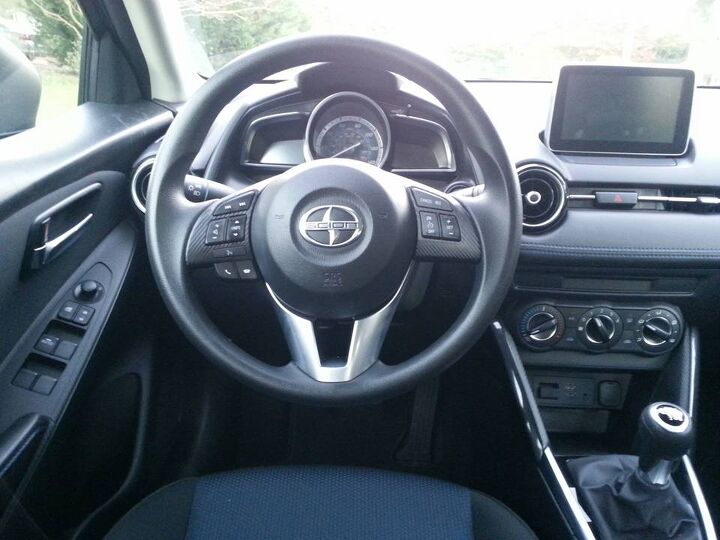


















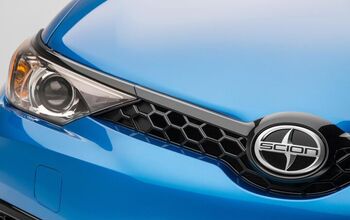
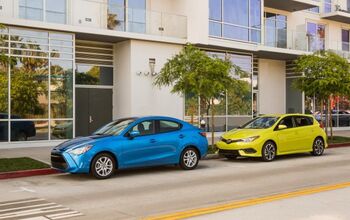
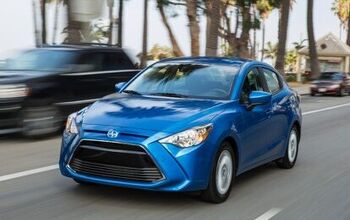
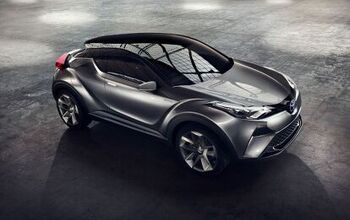











Comments
Join the conversation
MSRP for a Canadian spec Toyota Yaris sedan is 16 995$ and you can buy a base Mazda 3 for 15 550$. If you want cruise and A/C in your 3 you pay 18 350$. At this point if I wanted something cheap and Mazda I would go for the base model 3, save 1 445$ and live without A/C. Or I'd wait until Mazda put out some clearance event and hope it almost makes up the 1 355$ price difference.
I really want to try the iA 6MT. Seems like it would be a blast.